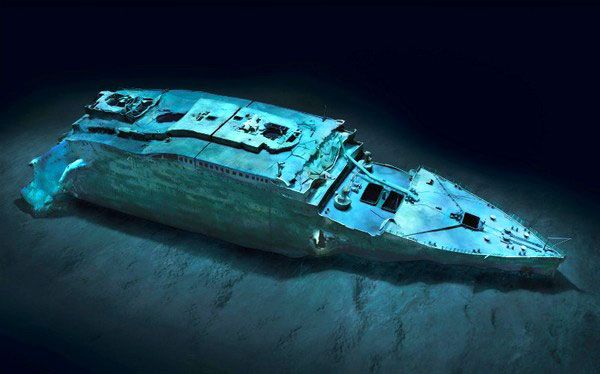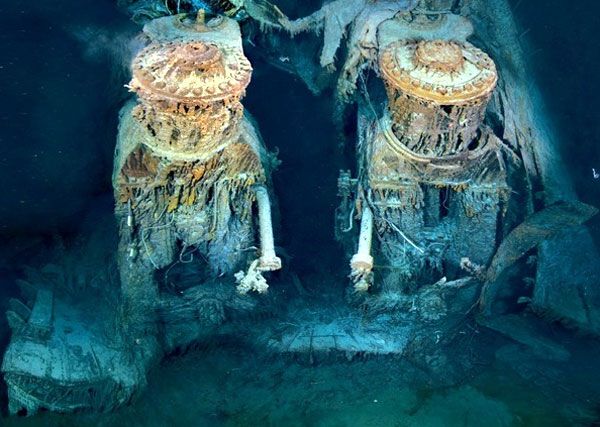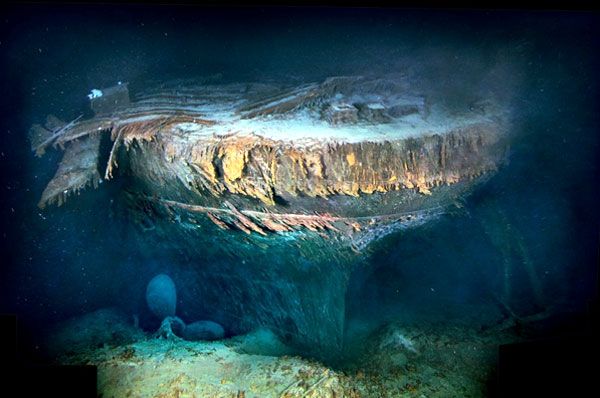
Copyright © 2012 RMS Titanic, Inc.; Modeling by Stefan Fichtel; Based on photomosaics produced by the Advanced Imaging and Visualization Laboratory, Woods Hole Oceanographic Institution
100 Years Ago Today, the largest ocean liner of its time sank in the middle of the North Atlantic Ocean after striking an iceberg on its maiden voyage. 1,514 people lost their lives...making this one of the deadliest peacetime maritime disasters in history. But I'm pretty sure you already knew all of this. Just wanted to share some new composite pics (which used hundreds of optical and sonar images that were stitched together) made of Titanic's wreckage that Scientific American posted on its website late last month. As of right now, the wreckage is slowly disintegrating due to iron-eating bacteria devouring the bow and stern sections of Titanic's hull at a depth of more than 12,000 feet. Within 50 years, the hull and structure of the passenger ship will collapse entirely due to the rapid growth of bacteria feasting on its metal, eventually leaving behind only the more durable interior fittings of the vessel intermingled with a heap of rust on the cold Atlantic seafloor.
Physically, the Titanic will inevitably be no more...but if this journal entry, books, TV shows, museum exhibits and an Oscar-winning film (I still haven't seen Titanic 3D at the movie theater, BTW) are any indication, the ship's memory will go on. Yes, that was a play on Celine Dion's song.

Copyright © 2012 RMS Titanic, Inc.; Produced by AIVL, Woods Hole Oceanographic Institution

Copyright © 2012 RMS Titanic, Inc.; Produced by AIVL, Woods Hole Oceanographic Institution

Copyright © 2012 RMS Titanic, Inc; Produced by AIVL, Woods Hole Oceanographic Institution

No comments:
Post a Comment